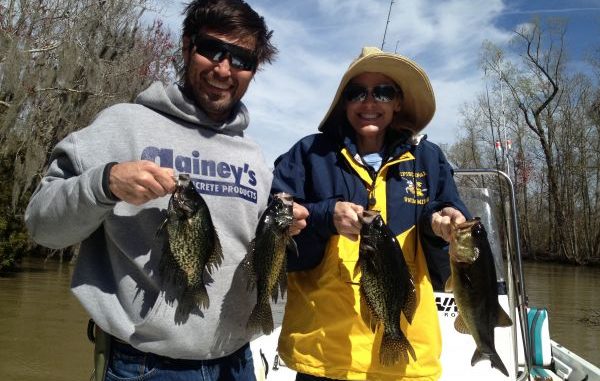
15,000 acre lake near Farmerville is best crappie lake in the state, according to Bobby Phillips
EDITOR’S NOTE: This is the third article in an online series on hot crappie spots across the state that originally appeared in Louisiana Sportsman magazine. Today’s article features information on Lake D’Arbonne, and on Monday we’ll take a closer look at Caney Lake.
Bobby Phillips makes no bones about it: he loves Lake D’Arbonne and hopes Mother Nature cooperates this year for a February crappie spawn.
“D’Arbonne to me is the best crappie lake in the state. I’ve never fished a lake any better,” said Phillips, a veteran crappie angler who used to own the Honey Hole Tackle Shop in West Monroe. “It’s 15,000 acres and it has two major tributaries that run into it, and the water rises and falls.
“Crappie like fluctuating water.”
Depending on what type of winter north Louisiana experiences in February, he said the spawn could begin as early as mid-month on the lake, which is located northwest of Monroe near Farmerville.
“If it doesn’t, they’ll still be on the channel or the edge of the channels and you can catch them in deep water,” he said. “It all depends on Mother Nature.
“But if the water temperature warms up, it could be on like a chicken bone in shallow water.”
For the best deep water options, Phillips suggested trying the main channels near either the Hwy. 33 or Hwy. 2 bridges.
And anglers have plenty of choices: vertical jigging, casting with an ultra-light rod and swimming a jig, using double-rigged jigs on a jig pole, or spider-rigging to locate schools of fish in deep water.
Jig-wise, he likes the blue thunder Bobby Garland baby shad or Southern Pro’s stinger shad in popsicle.
If the crappie happen to move in to start spawning in mid-February, Phillips suggested either Bear Creek, Stowe Creek or Little D’Arbonne Creek right in front of the state park.
He prefers using hair jigs in a variety of presentations in shallow water, and the Black Lake #120+ in red gray, chartreuse and red and the #180 powder blue and gray are two of his favorites.
“I can fish it under a cork if I’m shallow, or pitch it to the tree with my jig pole, swim it away from the tree, vertical jig it, or swim it around the trees right off the bottom,” he said.
He uses the 1/16-ounce jighead if the wind is blowing or if the crappie are aggressive, and switches to 1/32-ounce if they’re not as feisty.
“The reason I like to fish the hair jigs is most of the time in the spring, the fish are not real aggressive, especially those males. They just want to move that bait away from where they’re bedding on the roots of the those trees,” Phillips said. “They barely pick it up, barely open their mouth and barely suck it in, and that hair gets out of the way of that hook, where a soft plastic doesn’t sometimes.
“That hair is real pliable, synthetic hair on that jig and it just moves out of the way for the hook set.”


